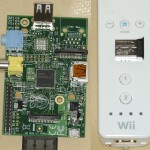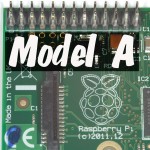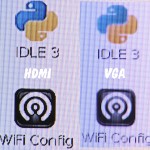A few days ago I was playing about with my Raspberry Pi Model A. I wanted to measure the power consumption, since I started a thread on the Pi forums that talks all about this. This threw up an interesting problem because I wanted to measure the power consumption of the Pi both with and without my wifi dongle. But if I pull out the dongle, I’m not sure it will reconnect when I re-attach it, and then I won’t be able to communicate with it (I was using it headless – no monitor/keyboard). Eventually […more…]

There’s still some free tickets left for the Milton Keynes Raspberry Jam this coming Sunday 24 Feb 2013. Click here to reserve a ticket http://www.eventbrite.com/event/5421371468 What’s so special about the MK Jam? The Milton Keynes Jam is rather special because it is held at the National Museum of Computing, which is on the same site as Bletchley Park. They’ve got the oldest working digital computer in the world – the WITCH. Also there is Colossus – the famous code-breaking computer from World War 2. If you like computers, it’s an awesome place. (And if you […more…]
BBC Technology program Click just used a segment from the video I posted a couple of weeks ago on the model A release. It’s right in the middle of this 6 minute video. About 8 seconds starting around 4:28. It’s a real shame I was out yesterday afternoon when Liz was trying to get in touch – I could have given them a much nicer 1080i HD version. :( Watch the whole 6 minutes though, it’s a good one about hackers, makers and Pi users.

Matt Hawkins from Raspberry Pi Spy has done the leg-work enabling Pi users to use a Wii controller – along with a Bluetooth USB dongle to send inputs to the Raspberry Pi. It uses a Python library called “CWiid” (I imagine this is pronounced “seaweed”). This is awesome because the Wii controller has 11 different digital inputs. When you consider combinations of inputs, that gives you a lot of extra possible “input commands” to play with. Theoretically*, with 11 buttons, there are 55 different 2-button combinations (11C2). That should be enough for most uses. If […more…]

I was keeping an eye on the RS and Farnell sites on Monday morning because I’d heard a ‘reliable whisper’ that the model A was launching this week. I didn’t know what day, but I figured it might be Monday. No sign of anything early morning, but then I forgot and didn’t see Liz’s announcement on the Pi blog until a couple of hours after they went live. By that time, RS was showing back order, but Farnell had stock levels of ~1800, so I snagged one. I got a “shipped” email about 3 hours […more…]

This is part 2 of my review of the HDMI/VGA 1080 Ultimate HD Video Converter. It covers comparison of VGA and HDMI in the GUI; use of an old 1024 x 768 VGA monitor with the Pi; using a VGA projector to show a video; trying out an MHL adaptor with a phone and VGA monitor. If you haven’t seen part one yet, you can find that here. To complete the review, I set myself the following tasks… see if I can get it to go full-screen in GUI by tweaking settings do some side […more…]
Alex Gibson, co-host of the Oxford Jam impressed us all with his RepRap 3d printer controlled by a Raspberry Pi. I hadn’t seen one of these up close and personal before. I’d really like one now, but I have a feeling it requires a large investment in time to build, calibrate and use. Check out the 4 minute video. Most impressive indeed! :) Background Alex told us he’d joined the Thames Valley build group, which is a bunch of people who get together to help each other make RepRaps. The reel of poly-lactic acid (PLA) […more…]